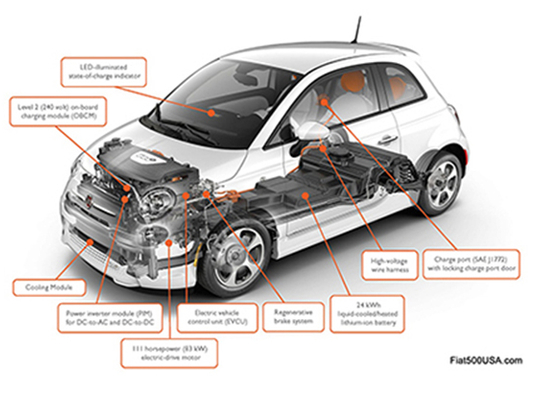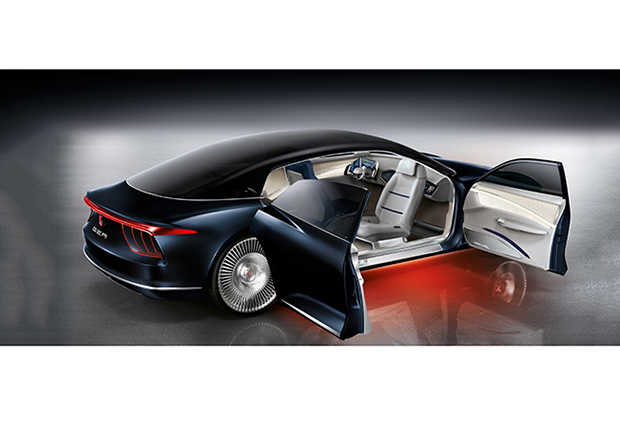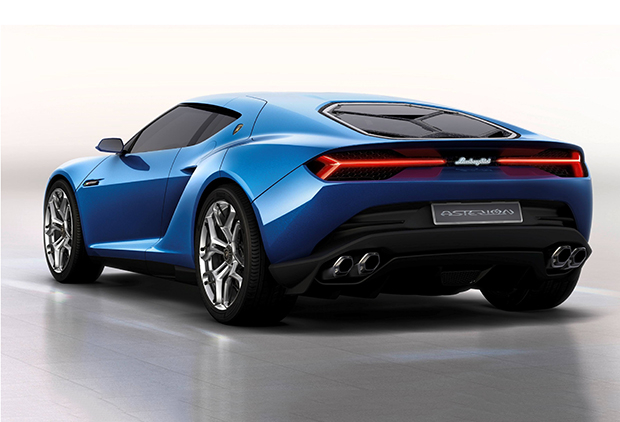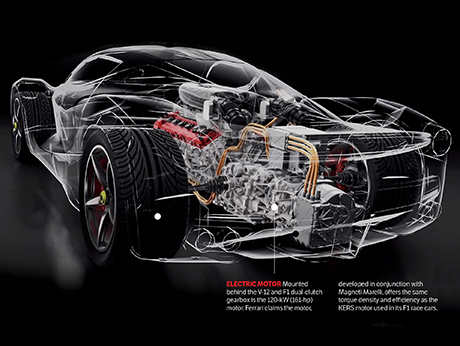
What better way to drive home the message of sustainability than to drive around in eco-friendly cars? The main theme for Expo Milano 2015 is Feeding the Planet, Energy for Life, and the organisers are putting this message into motion — staff and delegates will travel in a fleet of 105 low-emission, fuel-efficient cars provided by Fiat Chrysler Automobiles. More than 70 of these are the Fiat 500L Natural Power model, which runs on natural gas and can even be pumped with biomethane, while 10 electric Fiat 500e cars will be used on the exhibition grounds.
Small is sustainable
When the Fiat 500e was launched in 2013, it was widely hailed as the best electric car of the year. The 2015 model pushes the technology further, delivering around 160 kilometres on a charge, while its regenerative braking system tops up the battery in stop-and-go traffic. On the gasoline side of things, Fiat has won rave reviews for its patented multiair cylinder head system, which reduces pumping losses in the engine. It took over a decade and $100 million (Dh367 million) to develop this tech, and was first used in 2009 in the Alfa Romeo Mito.
Fiat claims multiair delivers 10 per cent more power, while also cutting down fuel consumption and carbon dioxide emissions by 10 per cent.
Prancing with hybrids
In 2010, Ferrari demoed the HY-KERS (kinetic energy recovery system) hybrid engine, which integrated two electric generators and a lithium-ion battery pack. So every time you braked, the system converted negative torque into electricity and recharged the batteries. Since then, Ferrari has been experimenting with hybrid engines that reduce emissions while conserving fuel.
A flashy result of these efforts was on display in December at the Yas Marina circuit in Abu Dhabi, when Ferrari unveiled its most extreme hybrid supercar — the FXX-K. The K stands for KERS, and 187hp comes via an electric motor. Also on Ferrari’s growing roster of hybrids is the LaFerrari, which Car and Driver magazine has described as the king of all exotic sports cars. It’s bundled with a quiet sidekick — an electric motor that gives the car’s V12 engine a 161-hp boost. The Italian carmaker has pledged that all its future cars will either be turbocharged or hybridised.
Luxury goes greener
Ferrari is not the only one experimenting with hybrid tech for its supercars. Last October, at the Paris Motor Show, Lamborghini held a technology demonstration with the V10 Asterion hybrid concept. The car is equipped with three electric motors, and drivers can switch to Z mode for a zero-emission run. Lamborghini claims the car can travel up to 50km on electric power alone, and be charged via a wall plug or regenerative power.
But don’t expect it to be a speed demon. Stephan Winkelmann, President of Lamborghini, clarified that the car was more for “comfortable luxury daily cruising than for ultimate track performance”.
Car, take me home
Eco-friendly autonomous cars that will smartly navigate the streets while you lounge in the backseat are on the horizon. Even the likes of Google and Apple are in the smart car fray.
At the 2015 Geneva Motor Show, Sergio Marchionne, CEO of Fiat-Chrysler, acknowledged that technology companies moving into driverless and electric vehicles could shake up the industry, but also added that traditional car manufacturers were perfectly capable of responding and adapting to the upcoming challenges.
An area that will get a significant overhaul will be the interiors of the car, as the focus moves away from the driver’s seat to the rear seats. An exciting Italian take on this vision was on display at the show -- Italdesign Giugiaro’s GEA concept, powered by four electric motors. “The time spent travelling will become productive even in a car,” it said in a statement. “With the three internal setting configurations, the car can turn into a travelling office, a wellness or a dream area.”
Electrifying supercars
When you think of Italy, chances are you’re visualising flat roads and gas-guzzling supercars zipping past, their engines howling, leaving behind sedentary electric cars like the Fiat 500e as a tiny speck in the rear-view mirror. However, that could soon change. In October, Sicily-based Tecnicar demoed the Lavina, Italy’s first fully electric supercar. It is capable of going bumper to bumper with Ferraris and Lamborghinis with a 789hp producing electric motor that can do 0-100kmph in 3.2 seconds and reach an electrifying top speed of 300kmph.
Sky is the limit
Italian brands from whom you won’t be seeing electric vehicles anytime soon include Maserati and Alfa Romeo. Harald Wester, CEO of Maserati and Alfa Romeo, famously said in 2013, “All this discussion about zero emissions is nonsense… Electric cars are not the answer.”
But he conceded that at some point in the future, his companies will need to dabble with hybrids, if only to meet regulations.
That said Maserati is taking a different track – one that should result in lighter, more efficient cars. In December, the company inked an agreement with Airbus for access to game changer aeronautics and space technologies. The results should hit the roads by 2016. Unfortunately, a flying car does not seem to be in the works.











